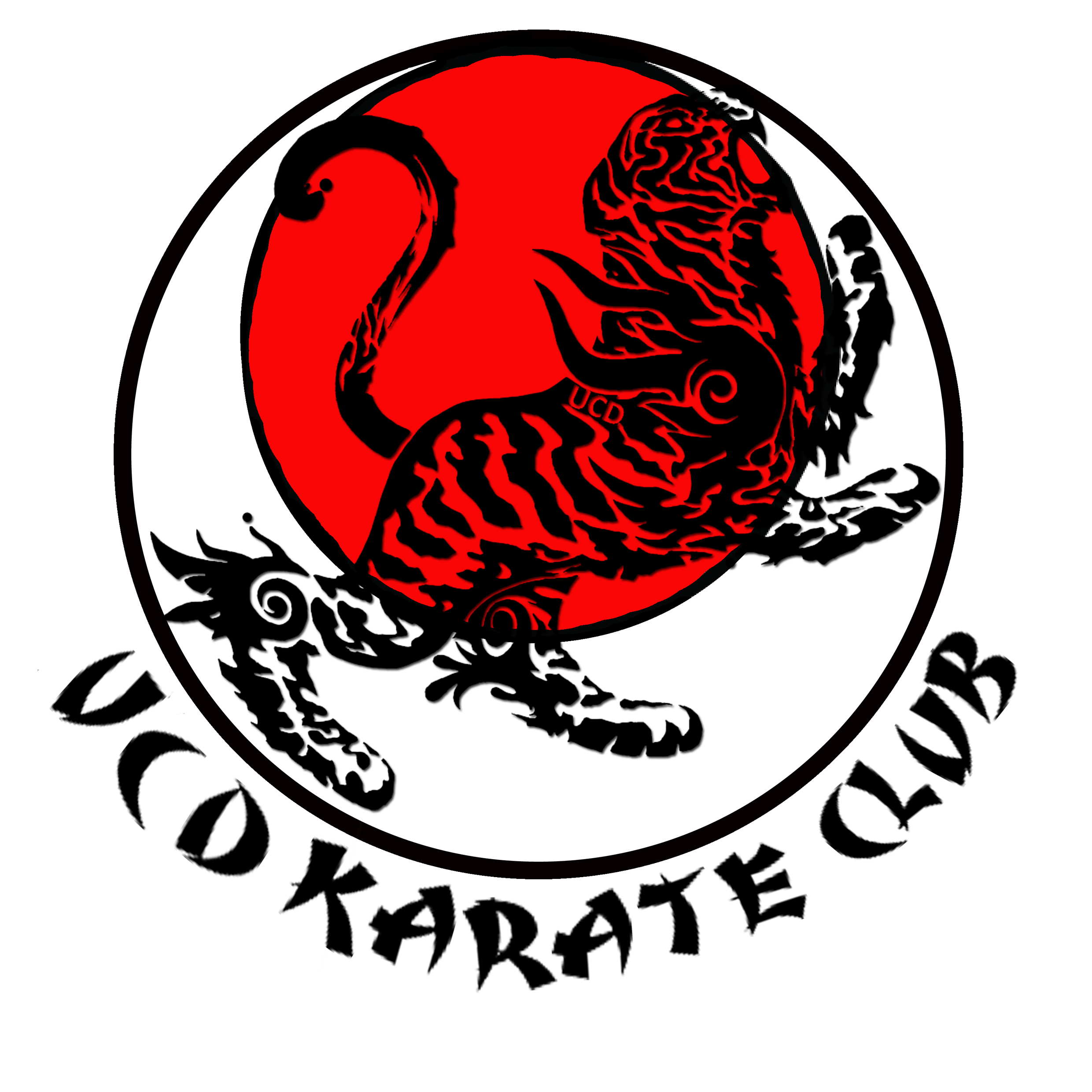
Useful Information
Kime (pronounced Kim-eh), is an explosive movement, whether it be a punch, kick or block, to the target, using the correct technique combined with maximum power and delivered in the briefest time available.
It is a concentration or focus of all the bodies energy into that split second a technique reaches its target.
Any non-karateka can kick and punch relatively fast, some faster and stronger than others depending on their sheer physique. Karate technique though is attained through correct contraction and expansion of certain muscle groups, and therefore does not rely on body-weight or size.
Suppleness too is an important factor in maximising the tension and relaxation of the muscle groups involved.
The breath is exhaled sharply at exactly the same moment in time and is often accompanied by the 'Kiai'.
The kime itself must be explosive and quick and must not be held for long as it will lose its effectiveness. Therefore the Kiai must also be explosive and quick and not held for too long.
A Japanese Sensei once explained that "Correct kime should be the length of time it would take to crush/squeeze a small egg in the palm of your hand", and indeed the actual kiai itself should last approximately the same amount of time.
Another way of understanding the very essence of Kime is to liken our normal energy to that of sunlight. Strong indeed but add the use of a magnifying glass lens and place onto a specific point and that same light becomes devastatingly more powerful. The non-karateka would have the normal energy but the good karateka using the full effect of kime would create that awesome extra power.
Nakayama Shihan stated:
'A technique lacking Kime can never be regarded as true karate, no matter how great the resemblance,'......'Karate without kime is like a tree that does not bear fruit.'
Ichi - One Ni - Two San - Three Shi - Four Go - Five Roku - Six Shichi - Seven Hachi - Eight Kuu - Nine Juu - Ten
StancesShizentai - Ready stance Zenkutsu-dachi - Front stance Koh-kutsu-dachi - Back stance Kiba-dachi Horse stance Neko-ashi-dachi - Cat's leg stance Sochin-dachi/Fudo-dachi - "Immovable" stance Sanchin-dachi - "Hourglass" stance Hangetsu-dachi - "Half moon" stance
Arm AttacksTsuki - Punch Oi-tsuki - Lunge punch Gyaku-tsuki - Reverse punch Kizami-tsuki - Jab punch Nukite - Spear-hand Ura-ken - Back Fist Empi - Elbow
Leg AttacksKeri/Geri - Kick Mae-geri - Front (snap) kick Mawashi-geri - Round house kick (Yoko-geri) - Kekomi Side thrust kick (Yoko-geri) - Keage Side snap kick Ushiro Geri - Back kick
Target AreasJo-dan - Head/Face/"upper" level Chu-dan - Stomach/"middle" level Ge-dan - Groin/"lower" level
BlocksAge-uke - Rising block Soto-ude-uke - Outside block Uchi-ude-uke - Inside block Ge-dan barai - Lower block/"lower level sweep" Shuto-uke - Knife-hand block Nagashi Uke - Deflecting block
Additional VocabularyAka - White Ashi - Leg Choku - Straight Co-hai - Junior Student Dojo - Training Hall (literally "Way-place") Hajime - Begin/start Hid-ari - Left Ken - Fist Kiai - Spirit shout Kumite - Sparring Mae - Front Migi - Right Moku-so - "Quiet meditation" Obi - Belt Rei - Bow Seiza - Kneeling (literally "correct sitting") Sempai - Senior student Shiro - Red Ta-te - Vertical Ushiro - Back Yameh - Stop Yohi - Ready/Attention Yudansha - Black-belt grades
PronunciationAll vowels are short, as follows: "a" as in "father" "e" as in "bet" "i" as in "teen" but shorter "o" as in "boat" but shorter "u" as in "shoot" but shorter Consonants always take their hard sounds. Therefore "Karate-Gi" (karate suit) is pronounced "Gee". The hyphens are added to separate the syllables clearly and shouldn't be paused.
Hitotsu, jinkaku kansei ni tsutomurukoto - One, to work towards the perfection of character Hitotsu, makoto no michi wo mamorukoto - One, to protect the path of truth Hitotsu, doryoku no seishin wo yashinaukoto - One, to nurture the spirit of hard work Hitotsu, reigi wo omonzurukoto - One, to give weight to courtesy and respect Hitotsu, kekki no yuu wo imashimurukoto - One, to reign in impetuousness The five precepts can be distilled to a more manageable format: 1. Character 2. Sincerity 3. Effort 4. Etiquette 5. Self-control